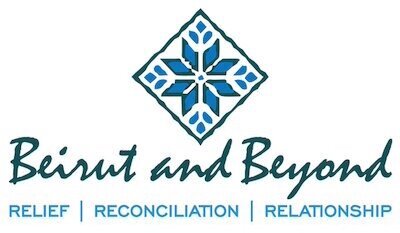O Little Town of Bethlehem
O little town of Bethlehem
How still we see thee lie
Above thy deep and dreamless sleep
The silent stars go by
Yet in thy dark streets shineth
The everlasting Light
The hopes and fears of all the years
Are met in thee tonight
There’s a wall. It’s been called The Wall, The Separation Barrier, The Israeli West Bank Barrier or The Apartheid Wall, regardless, there is a wall in an occupied territory. But, it happens to be right where Jesus was born, there is a wall surrounding Bethlehem on three sides and is cutting the Arab Christian community of Bethlehem off from the Arab Christian community of Jerusalem. While tourists are free to go between the cities and through the checkpoint. [1]The cities are only 20 minutes away.[2]
Bethlehem has historically been a city mixed with both Palestinian Christians and Muslims with the majority of Christian. Now, in the village where Christianity was literally born, the local indigenous Palestinian Christian population is 18%. Where Jesus was born. 18%. [3] In 1900, the city of Bethlehem was 90% Palestinian Christian. [4]
What do you think is the cause for this? Is it Muslim extremists terrorizing and oppressing the Christian minority? While this can and does happen, this is not the case in Bethlehem. Palestinian Christians and Muslims have been living together somewhat peacefully for centuries. Why the decline? Why are Palestinian Christians immigrating out of areas that their families have lived for centuries?
Is it purely economical? How does occupation affect their daily lives? Israel has already built 20 settlements on Bethlehem land and is building another near Rachel’s Tomb. These colonies are outside Israel’s borders and violate international law[5]. About 70% of Bethlehem’s farmland has been annexed to Israel by the separation wall, which also destroys commerce.[6] In June of last year, UNESCO listed the Church of the Nativity (thought to be the birthplace of Jesus) as an endangered historical site. [7]
Many Palestinian Christians rely on tourism as their source of income, running souvenir shops and making crafts. One of the most distinctive products made by Palestinian Christians in Bethlehem are olive wood carvings. The region of Bethlehem is famous for it, carvings of crosses, nativities, ornaments, boxes, vases, rosaries, and much more. And yet, as the result of the wall, the lack of tourism and their inability to travel freely, they are being economically strangled.
Is this how you pictured modern day Bethlehem? If not, how did you?
Something interesting that I’ve learned this past year is the term used for Palestinian Christians living in the Holy Land. They are referred as “living stones of the church”.
“As you come to him, the living Stone—rejected by humans but chosen by God and precious to him—you also, like living stones, are being built into a spiritual house[a] to be a holy priesthood, offering spiritual sacrifices acceptable to God through Jesus Christ. For in Scripture it says:
“See, I lay a stone in Zion,
a chosen and precious cornerstone,
and the one who trusts in him
will never be put to shame.” ~1 Peter 2:4-6
Would you apply this scripture to a Palestinian? For the past decade, I have heard much about praying for the persecuted church. Does this include our Palestinian brothers and sisters in Christ? How do we pray for the church in Palestine? Arab Christians? Currently, Palestinian Christians make up 2% of the Palestinian population of Israel. Compare that to 1920 where 20 percent of Palestinians were Christians. [8]
That’s the reality this Christmas of 2013, Christians in Bethlehem are suffering. The reality is after centuries there may not be a remnant of Arab Christians in the Holy Land. “The decline in the numbers of Christians [in the Holy Land] has reached a critical point… there is a major possibility that the Holy Land will have virtually no Christian presence . . . .”[9]
Below, I have included a 60 Minutes report of Christians in the Holy Land. You can hear Palestinian Christians in their own words tell about their lives: I encourage you to spend a few minutes to watch it.
This Advent season, every time I sing “O Little Town of Bethlehem,” I will remember to pray because in this Christmas Carol lies the hope, the hope for the entire world.
“…to Yet in thy dark streets shineth
The everlasting Light
The hopes and fears of all the years
Are met in thee tonight”
Will you join me in praying for Bethlehem when you sing this song? To pray for Palestinian Christians, to pray for their churches, to pray for their lives, to pray for them as living stones precious to God, to pray for God to use them as peacemakers, and to pray for peace in the torn land of Israel and Palestine.
[1] http://vicbethlehem.wordpress.com/2012/03/01/how-to-get-to-bethlehem-from-jerusalem/
[2] http://www.fmep.org/reports/archive/vol.-22/no.-1/map-settlement-expansion-encircling-bethlehem-2012
[3] http://www.cbsnews.com/video/watch/?id=7406228n
[4] http://ngm.nationalgeographic.com/geopedia/Bethlehem
[5] http://www.interfaithpeaceinitiative.com/bethlehem.php
[6] http://www.interfaithpeaceinitiative.com/bethlehem.php
[7] http://www.csmonitor.com/World/Latest-News-Wires/2012/0629/UNESCO-designates-Church-of-the-Nativity-as-endangered-site
[8]https://org2.democracyinaction.org/o/5145/images/JCPA%20Background%20Paper%20on%20Palestinian%20Christians%207%202.pdf
[9]https://org2.democracyinaction.org/o/5145/images/JCPA%20Background%20Paper%20on%20Palestinian%20Christians%207%202.pdf

